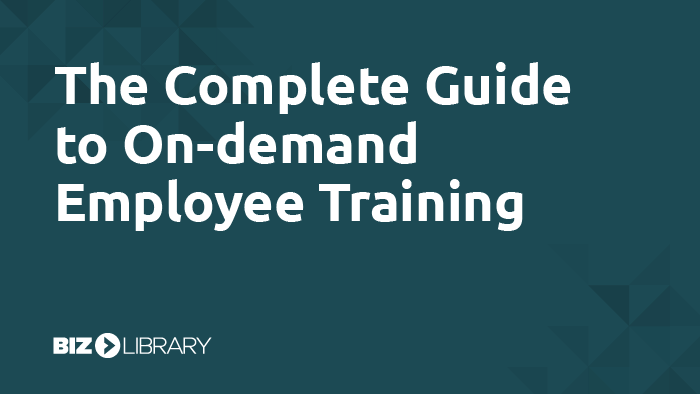
We recently shared a few signs that indicate your training content is in need of an update. There’s no question that when training content is “hip with the times” it is more effective for today’s workforce. However, content providers, and training professionals still struggle with defining what modern training looks like.
So the question is, what are the main elements that go into content offerings that are truly modern and what makes them more effective?
Here are the four factors that we use to evaluate training content to determine if it meets our standards.
Factor 1: Video
If companies aren’t already using video for their training, they most likely have some sort of handbook and reading material to help on-board employees and continue their education.
The problem with this training model is that most people read around 200 words-per-minute and comprehend about 60% of what they’re reading. Video offers learners the chance to speed through things they already know, and re-watch things they can’t comprehend on the first view. Since learners can comprehend more information in a shorter amount of time when they hear it, video can significantly cut down on training time.
On top of that, most people prefer to watch video to learn things. YouTube, the most popular video-hosting site in the world, boasts an average daily visitor count of 30 million. Of the top ten types of videos on YouTube, tutorials and how-to’s are the second most viewed videos, and educational content is the ninth most popular type of video. Not only do people want to learn from videos, they are actively seeking out knowledge from video.
Factor 2: Length
Modern learners need answers, and they need them quickly. Besides the accessibility of video with today’s technology, having short tutorials helps people solve everyday challenges much faster than finding and reading an article or handbook. Let’s look at the the top three results for “How to fix a kitchen sink” on YouTube, a common problem that can be demonstrated via video:

You’ll notice that none of the videos are longer than ten minutes, and that the two videos with the highest view count are between 4 and 6 minutes.
That’s because these videos are great at transferring information efficiently. Learners want to solve their problems quickly, which means they want learning to be specific to what they need in the moment.
Factor 3: Recency
We’ll abandon the kitchen sink example and take a closer look at a skill that requires continuous education: social media marketing.
Here’s what the current top three results look like for ‘social media marketing’ on YouTube:

What worked in 2016 for social media marketers won’t always work today, so it’s crucial for information-rich content to be up-to-date.
Social media marketers are looking for learning content that is new, yet still short enough to watch in a single sitting – this is the same kind of learning that employees are seeking out. It’s delivered the same way they look to learn at home: streamed online, on-demand, and easily consumed.
That said, users will quickly seek other sources of information if your training content doesn’t provide them with the answers they’re looking for.
Content doesn’t simply need to be user-friendly, it has to be engaging. Users aren’t going to engage with most content, which is why content needs to engage with them.
Have you ever noticed that in just about every YouTube video ever made, the host asks viewers to “like and subscribe?” The practice is so pervasive on YouTube that if this tweet is to be believed, some toddlers believe that the phrase is a form of farewell!

Although hearing this phrase over-and-over again is annoying, when content creators ask viewers to do something, it’s an example of the content creator engaging with users.
Truly engaging content makes the first move; users don’t engage with content until the content engages them. So how can training content engage with viewers?
Factor 4: Fully Engaging
One of the most popular training videos in The BizLibrary Collection is “Ethics for Everyone.” Below the video player, the learner is invited to engage in a number of ways:

Learners can review a handout that reinforces the learning, they can access a transcript to review the material, and they can enroll in boosts—a series of emails that provide questions to reinforce the learning over time.
This content gives the learner several options for engagement and helps them retain what they’ve learned. This leads us to our full definition of engaging training content: it provides interaction for users and offers additional learning materials to reinforce what was learned long term.
At BizLibrary, we curate a library of thousands of off-the-shelf video lessons and courses that meet all of the criteria for modern training content. We’re committed to providing high-quality microlearning videos that are less than four years old. By doing this, we provide clients with the kind of quality content that sets up their workforce for success.

